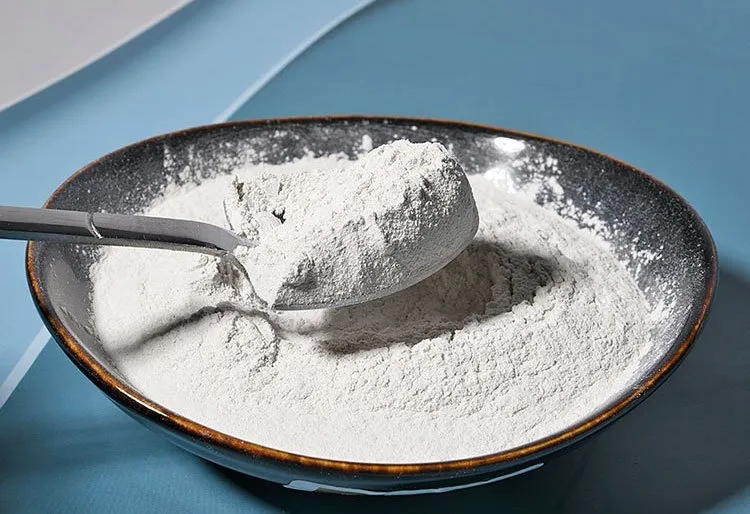
Maximizing Control and Safety in Gypsum Applications: Retarders, Accelerators, and Fire Retardants
Gypsum-based products are staples in the modern construction industry thanks to their affordability, smooth finish, and ease of use. However, working with gypsum requires precise timing and control. Too fast, and it hardens prematurely; too slow, and it delays progress. This is where specific chemical additives such as gypsum retarder chemical and gypsum plaster accelerator come into play, offering customized setting times to suit various applications.

Balancing Time and Efficiency with Gypsum Additives
A gypsum retarder chemical is typically used to delay the setting process of gypsum-based products such as plaster or wall panels. It slows down the hydration of calcium sulfate hemihydrate (plaster of Paris), giving workers more time to spread, shape, or mold the material. This is particularly useful in hot climates or during large-area applications. One popular solution on the market is extratime plaster retarder, a user-friendly product designed to extend working time without compromising the strength or finish of the final surface.
On the flip side, in colder environments or where rapid setting is required, a gypsum plaster accelerator is used. It speeds up the chemical reaction, allowing the plaster to harden faster. This is beneficial for small patch jobs or tight construction schedules where efficiency is a priority.
Finding the perfect balance between retarder in gypsum and accelerators is essential. Using too much of either can result in poor bonding, uneven drying, or structural issues. Professionals must understand the material and jobsite conditions to determine the ideal additive and dosage.

Specialized Uses: Plastering and Fire Safety Solutions
For manual or spray applications, plastering retarder is a must-have tool. It gives plasterers more time to work the surface, particularly on decorative or textured finishes. A good plastering retarder ensures that the mix remains workable for longer periods, reducing waste and allowing for better finishing techniques.
Another essential product in the gypsum category is gypsum board fire retardant. Fire-rated gypsum boards are used in high-risk areas like stairwells, corridors, and utility rooms, where fire resistance is a code requirement. The gypsum board fire retardant works by incorporating non-combustible materials such as glass fibers, mineral additives, and chemically-bound water into the board. In the event of a fire, these additives release water vapor to slow heat transfer and delay structural damage.
Whether it’s extending setting time with extratime plaster retarder or enhancing fire safety with gypsum board fire retardant, modern gypsum products are engineered to deliver performance and reliability across various construction scenarios.
Product FAQ: Gypsum Retarder & Additives
Q1: What is a gypsum retarder chemical?
A gypsum retarder chemical is an additive used to delay the setting time of gypsum-based materials, allowing for extended workability and reduced material waste.
Q2: When should I use a gypsum plaster accelerator instead?
Use a gypsum plaster accelerator when you need faster setting times—such as in cold environments, small-scale jobs, or fast-paced repairs.
Q3: What is extratime plaster retarder, and how is it applied?
Extratime plaster retarder is a commercial product mixed into gypsum plaster to extend the workable period. It’s typically added at a ratio recommended by the manufacturer before water is added.
Q4: Is a retarder in gypsum safe to use on interior walls?
Yes, retarder in gypsum is widely used in both interior and exterior applications. However, it’s important to follow dosage instructions to avoid weakening the final set.
Q5: What’s the difference between a plastering retarder and a general gypsum retarder?
A plastering retarder is specifically formulated for hand-applied or spray plastering tasks, offering smoother application and more surface control. A general retarder may be used for board production or molding.
Q6: How does gypsum board fire retardant work?
Gypsum board fire retardant incorporates additives like fiberglass and chemical binders that help slow the spread of flames by releasing water vapor and increasing heat resistance during a fire.
Q7: Can I use both a retarder and fire retardant in the same gypsum product?
Yes, many fire-rated gypsum boards contain both setting time control agents and gypsum board fire retardant materials to meet dual performance needs.
-
Hydroxypropyl Starch as a Sustainable Construction AdditiveاخبارNov.24,2025
-
The Gelation Properties of CMCاخبارNov.21,2025
-
Redispersible Latex Powder and Water Retention CapacityاخبارNov.21,2025
-
Dosage Control for Polycarboxylate Water ReducerاخبارNov.21,2025
-
Film-Forming Properties of Polyvinyl AlcoholاخبارNov.21,2025
-
The Function of Gypsum Additives in MortarاخبارNov.21,2025





















